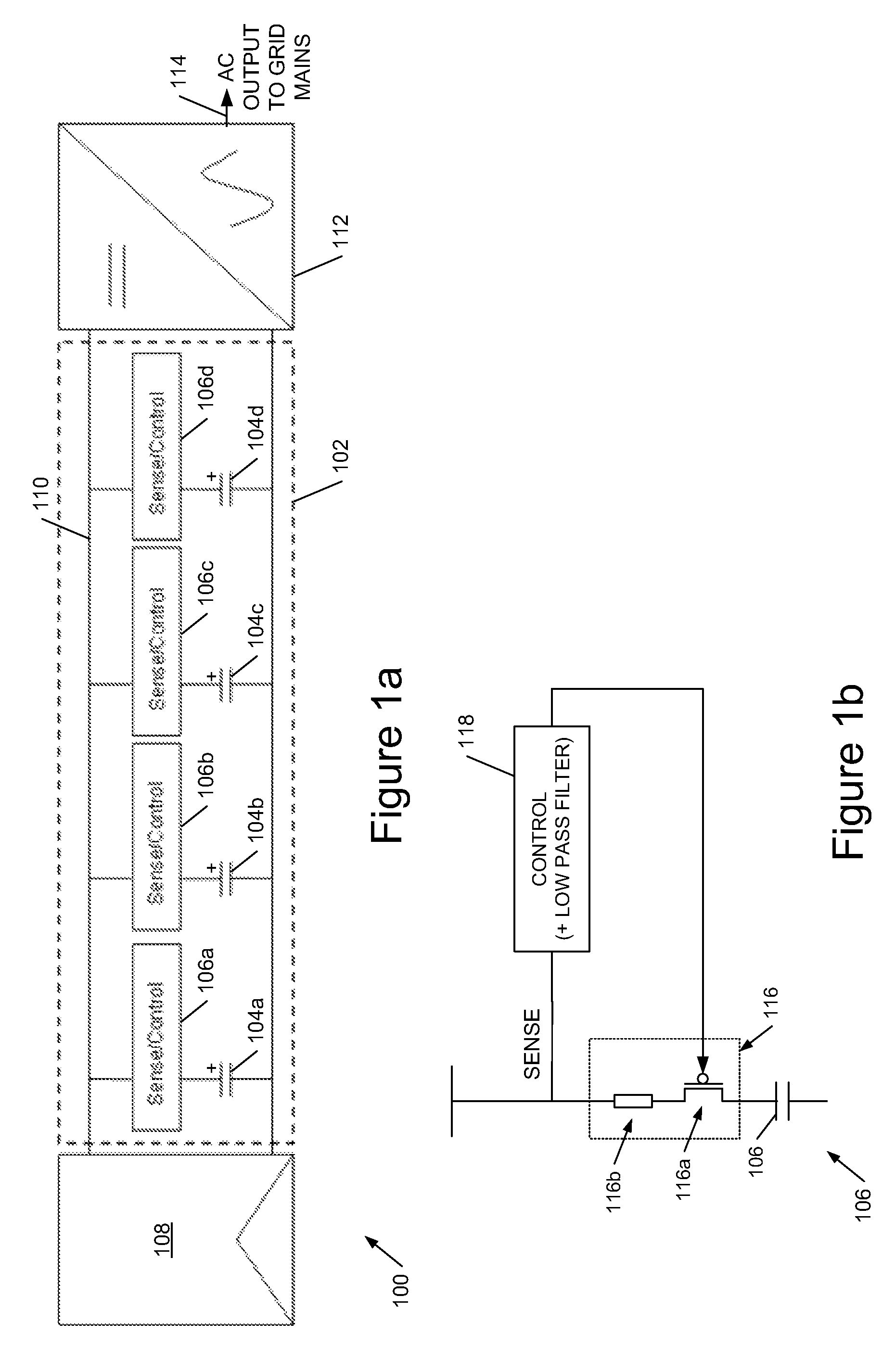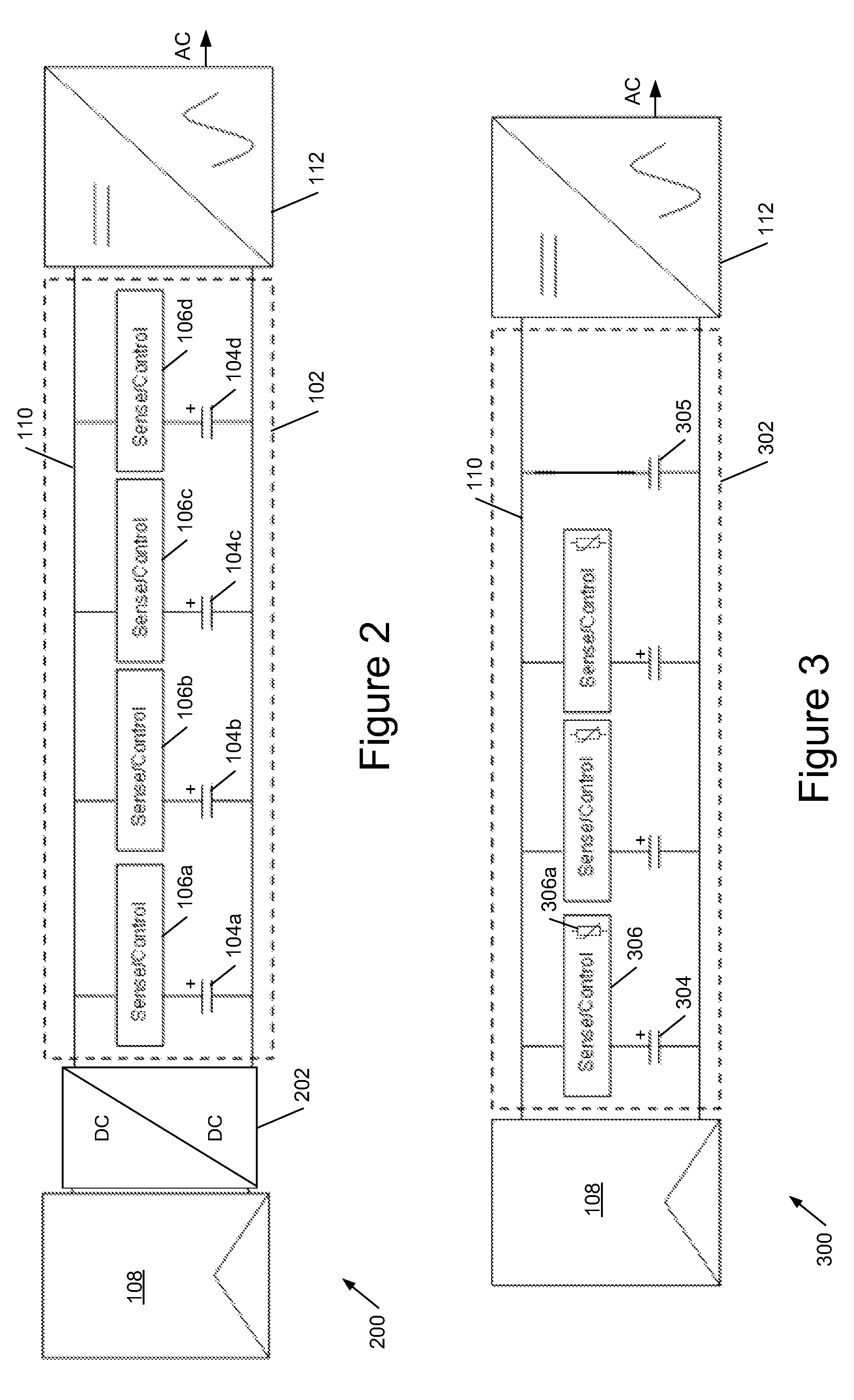Inverters
a technology of inverters and capacitors, applied in the direction of dc-ac conversion without reversal, process and machine control, instruments, etc., can solve the problems of prone to failure of electrolytic capacitors, thermal runaway effect, short circuit failure, etc., and achieve the effect of facilitating power factor control and/or var
- Summary
- Abstract
- Description
- Claims
- Application Information
AI Technical Summary
Benefits of technology
Problems solved by technology
Method used
Image
Examples
Embodiment Construction
[0028]Referring to FIG. 1, this shows an embodiment of a photovoltaic power conditioning unit 100 comprising a bank 102 of parallel-connected electrolytic capacitors 104a-d each with a respective sense / control circuit 106a-d. The power conditioning unit receives input from one or more photovoltaic panels 108 which provide dc power to a dc link 110 of the inverter, which in turn provides power to a dc-to-ac converter 112 which provides an ac output 114 to the grid mains.
[0029]An example embodiment of the sense control circuit 106 is shown in FIG. 1b, in the example comprising a senseFET 116 comprising a MOSFET 116a and a current-sensing resistance 116b. A voltage on the current-sensing resistance is sensed by a control circuit 118, which in preferred embodiments incorporates a low-pass filter to attenuate a current-sense signal at the switching frequency of dc-to-ac converter 112. The control circuit 118 is configured to switch FET 116 off when the sensed-current exceeds a threshold ...
PUM
 Login to View More
Login to View More Abstract
Description
Claims
Application Information
 Login to View More
Login to View More - R&D
- Intellectual Property
- Life Sciences
- Materials
- Tech Scout
- Unparalleled Data Quality
- Higher Quality Content
- 60% Fewer Hallucinations
Browse by: Latest US Patents, China's latest patents, Technical Efficacy Thesaurus, Application Domain, Technology Topic, Popular Technical Reports.
© 2025 PatSnap. All rights reserved.Legal|Privacy policy|Modern Slavery Act Transparency Statement|Sitemap|About US| Contact US: help@patsnap.com



